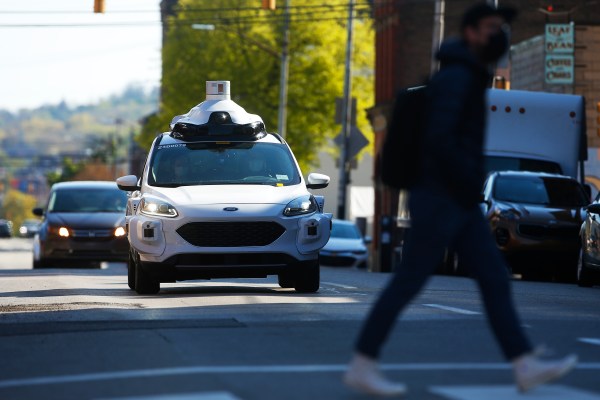Not quite a decade ago, two technologies were racing toward an unseen finish line. They weren’t competing with each other — the adoption of one didn’t lock out the other. But to avoid catastrophic climate consequences, the order of the finish mattered.
Autonomous vehicles had to lose, and electric vehicles had to win.
It wasn’t clear at the time which one would take the checkered flag. In some ways, autonomous vehicles seemed to have momentum on their side, making considerable progress since the first ones cautiously completed the DARPA Grand Challenge in 2007. Ten years later, seemingly everyone had a self-driving division.
Meanwhile, electric vehicles were off to a slow start. Early models could go less than 100 miles per charge on batteries that cost about a third of the cost of the entire car. Tesla broke the mold in 2012 with the Model S, but it was priced outside the bulk of the U.S. auto market. By 2017, the picture hadn’t changed much.
What a difference five years makes.
Autonomous vehicles have largely stalled while EVs have surged ahead. Self-driving vehicles may have conquered many mundane driving scenarios, but they’re still frequently stymied by other situations that human drivers navigate on a daily basis — pedestrians, inclement weather, construction zones.
Yes, Waymo and Cruise are operating taxi services that are open to the public, but they’re only available in parts of Tempe and San Francisco, respectively, cities they’ve been mapping and testing in for years. As anyone who’s driven in a different city knows, each metro area has its own quirks. Making the leap to a new city won’t be easy. Even former boosters like Lyft co-founder and president John Zimmer, who just six years ago said the majority of rides on the network would be autonomous today, now expects just 1% to 10% of future rides would fit that bill.
EVs, on the other hand, have been ascendant. Battery prices have fallen from over $1,000 per kilowatt-hour in the early 2010s to just over $100. Investors are pouring money into battery startups, and battery manufacturers are racing to build a global network of factories.
While affordable EVs remain rare, prices have come down since the Model S was introduced, and the number of models has expanded dramatically. Sales in Europe, China and the U.S. have swelled, and the future is looking even rosier in the wake of legislative and regulatory action that is cementing batteries as the go-to energy source for cars and light trucks.
Those two trends are diverging not a moment too late.
Transportation experts have suggested that autonomous driving could create two different outcomes, one they call “heaven” and another they call “hell.”
In the hellish scenario, autonomous vehicles become widely available and broadly used before EVs have a chance to get a foothold in the market. People become accustomed to sitting in traffic, burning gasoline as they commute or run errands solo. The number of miles people “drive” soars, congestion becomes the norm and pollution skyrockets. Investment would pour into autonomous systems, potentially at the cost of continued progress on batteries and EVs.
For heaven to play out, though, autonomous vehicles don’t have to lose forever. In fact, they’re integral to the heavenly scenario, playing a complementary role in electrification and ride-sharing. Ideally, electrification would happen first, or at least alongside autonomy and mass adoption of ride-sharing. Together, the trio has the potential to slash both pollution and the number of cars on the road, alleviating congestion and reducing people’s travel times.
Yet with autonomous vehicles seemingly years away from mass adoption, a fully realized “heaven” scenario will probably remain out of reach for the next decade or more.
That’s not ideal, but it’s better than being trapped on the highway to hell. Autonomous vehicles’ delays, coupled with the consistent uptick in EV adoption, appear to be forestalling the “hell” scenario.
For the foreseeable future, we’ll be stuck driving ourselves through traffic — or at least keeping an eye on things as the car does most of the work — but at least we won’t be forever pumping carbon into the atmosphere while doing so.
